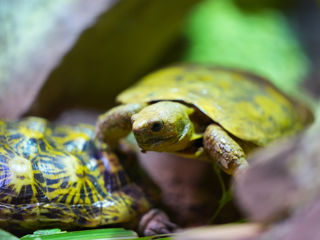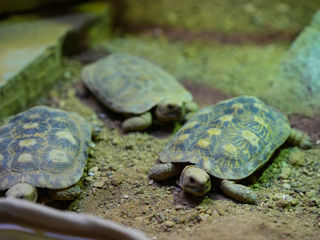
Pancake Tortoise

General Information
The pancake tortoise, unlike its hefty tortoise cousins, boasts an unusually thin, flat, and flexible shell. Whilst other tortoises lug around solid shell bones, the pancake tortoise has bones with delightful little openings, making it lighter and more agile than its peers.
The carapace (top shell) is brown, covered in a variety of dark patterns and lines on each shell plate, effective camouflage in its dry habitat. They are herbivores, feeding on a variety of plant materials, grasses and cacti.
The greatest threats facing the pancake tortoise are habitat destruction and its over-exploitation by the pet trade. This species has a very slow reproduction rate, meaning populations harvested for the wildlife trade take long periods of time to recover.

Latin name - Aonyx cinerea
Class - Mammals
Order - Carnivora
Family - Mustelidae
IUCN Status - Vulnerable
Habitat - resh water wetland and mangrove swamps
Distribution - Indonesia, S India, S China, SE Asia and the Philippines

Commercial development and growing human settlements diminishes the amount of suitable habitat for pancake tortoises, which already suffers from being of poor quality in many areas. Tortoises in Kenya are threatened by clearance of thorn scrub for conversion to agriculture and in Tanzania by over-grazing of goats and cattle.
The pancake tortoise is classified as critically endangered on the IUCN red list and listed on Appendix I of the Convention on International Trade in Endangered Species of Wild Fauna and Flora (CITES).
We are extremely proud to announce that a critically endangered pancake tortoise has hatched at the zoo in June 2023. Read more here

Sign up to our newsletter
Join our mailing list in order to keep up to date with Zoo news and special offers.






